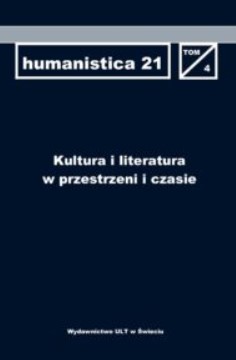Компаративистический взгляд на образ коркута в казахском фольклоре
Comparativistic view on the image of Korkut in the Kazakh folklore
Author(s): Anar SadırovaSubject(s): Cultural history, Customs / Folklore, Comparative Study of Literature, Theory of Literature
Published by: Wydawnictwo ULT w Świeciu
Keywords: antique literature; comparativism; world literature; comparative teaching; literary heritage;
Summary/Abstract: The article deals with comparative literature and constitutes a reflection on the comparative method. The diachronic comparative approach and the term comparative have been present in Kazakh literary studies for only 20-25 years. The aim of the article is an analysis of the folk image of Korkut and also an analysis of the motives of eternal life or escape from death with reference to this image. As a result of the development of capitalism in the world, economic relations have expanded, states and nations have developed interconnections and this has caused discussion on literary works. Comparativist reflection has led to forming numerous opinions concerning the form and origin of texts. Having analysed numerous motives related to the search for eternal life, we determined the circumstances of Korkut’s escape from death. Prometheus, Amirani, Korkut - what are the peculiarities in the actions of these three characters in their struggle against God? It is postulated in present-day science that Prometheus and Korkut should be considered as kindred images. With reference to ancient foundations in the image of Prometheus, the article which compares the appearance of the characters and their actions concludes that the phasic features are of primary importance. This is a criterion established in accordance with heroic mythology. The myth of Prometheus and the theme of the struggle with God in Ossetic tales of Amiran found their solution in the Kazakh legends about Korkut. Their achievement of eternal life within limited time is used here not as a motive of contradiction to God, but as an equivalent of the traveling function in a fairy tale. It is concluded that in the image of Korkut there is nothing that is inherent in the holiness in the Islamic religion. Thus, proving the antiquity of this image provides an opportunity to consider the patronage of Korkut. It is revealed that initially Korkut is shown not as a healer, but as a typical sage. According to researchers’ opinions, the multi-layered description of the image of Korkut was gradually generalized as the image of a healer in connection with his immortality. However, we believe that the patronage over the healers is more recent. Due to the fact that Korkut was known as a syncretic image, in this article, his divinatory activity is compared with his activity as the practitioner with the use of the comparative method. The fact that he belonged to healers and was the patron of healers was added at a later time.
Journal: humanistica 21
- Issue Year: 4/2020
- Issue No: 4
- Page Range: 131-153
- Page Count: 23
- Language: Russian

